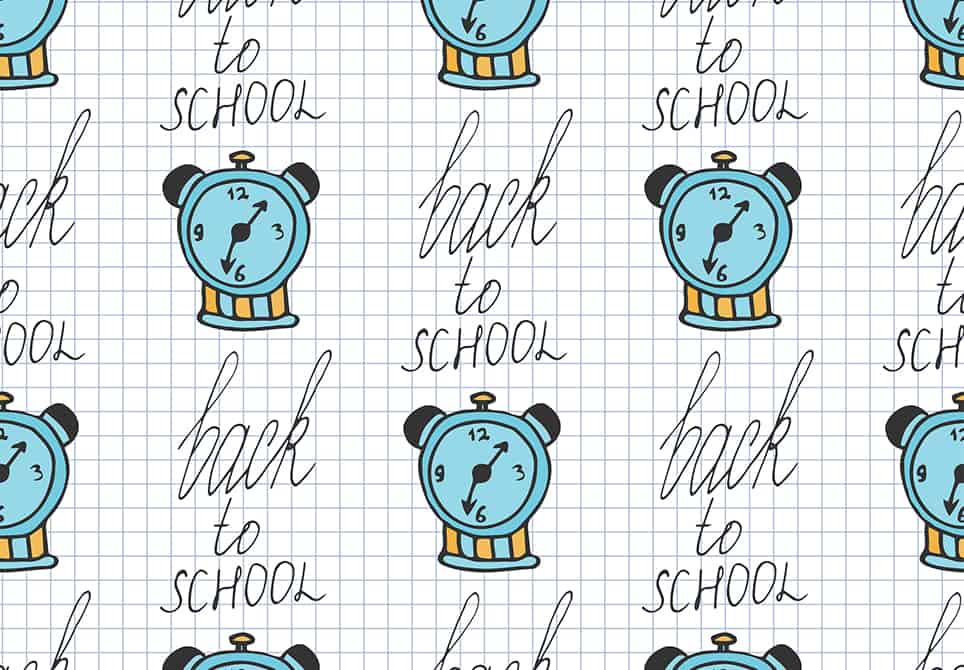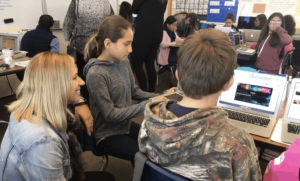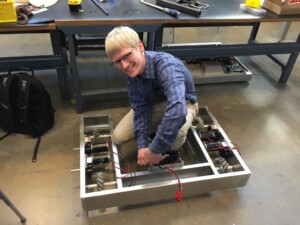3 Back to School Project-Based Lessons for Middle School

Amber Chandler
Starting the school year with a project based learning activity will set the perfect tone for your classroom. As you are establishing norms, developing your class culture, and getting the kinks out of new schedules and dynamics, a project-based learning experience can make a big impression on students, paying dividends for the rest of the year. You want to have impact, so I tell my students that their project must have BAM!
Burning questions. Gotta know, dying to know, really need to know, want to find out so much that you’ll stay after school, talk about it at lunch, and text about it
Authentic audiences: Share with the world, publish it online, put it in a class blog, make a movie, call the newspaper, do whatever it takes to reach over 300 people (double your class size)
Millennial skills: Make memes, create a gif, record a song, make a video game; essentially, this means posters won’t cut it in the 21st century!
Here are three projects that have BAM and ignite student interest:
Social Justice/Injustice
One of the undeniable influences on students is the media. With a twenty-four hour news cycle, it is easy for serious issues of social injustice to become a news byte and lose impact within even a few days. On the flip side, students do have some outside knowledge to draw upon to begin a thorough conversation of social justice. Mention Trayvon Martin, most students will know the story, but by linking current figures with historical ones, a deeper understanding will be gained and provide opportunities for active engagement and contextualize what might otherwise be isolated facts.
Many middle schools teach Farewell to Manzanar, a definitive book about the social injustice perpetrated against Japanese American citizens after the bombing of Pearl Harbor. These American citizens were herded into concentration camps, most notably Manzanar. New America Media has a great mystery for students: “Murder in Manzanar: Unsolved 70 Years Later.” This is an amazing opportunity to connect the current racial violence with an historical event that was, in its time, also subverted. As an extension, a lesson in media ethics grows organically from the discussion, particularly after watching “The United States of America Presents: Japanese Relocation” presented by the Office of War Information—Bureau of Motion Pictures.” Finally, students can take a virtual field trip through the camp. Send students on a scavenger hunt, a fact finding mission, or an assignment as embedded reporters. Give your students a chance to utilize their 21st century skills to research and share their findings while providing a memorable learning experience around the topic of social injustice.
Math Is Beautiful
For someone, like myself, for whom Sudoku is mind-boggling, the idea that math is beautiful might be a bit of a stretch. However, that’s only before a project-based learning experience that captured even my reluctant imagination. First, allow this topic ample time for discussion ahead of the project. You might be surprised how many students see the art of a tessellation or the Cubism-like sensibility of geometry. So many times, just as I have done here, teachers and parents project their math anxiety, so make sure to check your tone at the door.
This PBL activity is perfect to try out another huge trend in education right now—encouraging your students to be Makers. The idea is simple: let your students learn with the right materials and guiding questions, and engagement is not even a question. Concepts become realities for students. “How is Math Beautiful? Exploring By Creating” in the New York Times via The Learning Network, is a great lesson plan, replete with links and assessment questions, that can promote the type of deep questioning and reasoning skills that middle schoolers are capable of, but might not always be challenged to do. They are asked to create an exhibit (I’d do these in teams) physically showing what is beautiful about math using the materials provided. They have the resources to learn with, guiding questions, and an authentic final product. Imagine how differently some of us more tepid math enthusiasts would feel if the approach was like this?
Chamber of Commerce Challenge
Six grade teachers might solidify themselves as proverbial teachers of the year with this project-based learning experience. During those first few weeks of school what is the greatest distraction to learning upon entering middle school? The newness of it all. Where do I buy a pencil? Who do I talk to about fall sports? When do I try out for the school play? Who do I talk to if I have a problem? Imagine a way to mitigate these problems, all without losing face or embarrassment.
Adults know that a Chamber of Commerce is an organization, housed in a particular place, who represents all the members of the community. Begin by debriefing how the first few days have gone. Some might open up immediately, but just hearing that they aren’t alone is helpful. Then, announce that your room is going to become a Chamber of Commerce. Likely, they will be puzzled, so have your town’s pulled up to show them. Here’s Hamburg, New York’s Chamber of Commerce. Let students navigate the site, taking notes with their teams about the types of information found on the website.
The next part is where the fun begins. Provide students with a list of important questions they’d need the answers to, similar to the one’s listed above. Create about 10 questions, or if your school is very large, fewer. You want the students to have a class period to find the answers, making sure they record the factual information necessary to promote the group. For example:
Question: If I want to try out for basketball, what do I do?
- Go to Mr. Smith’s room, 249, in the C hallway to sign up for boy’s basketball. There’s a sign-up sheet. Make sure to bring something to write with because the schedule of tryout dates is listed.
- Go to Mrs. Smith’s room, 251, in the D hallway to sign up for girl’s basketball. Tryouts are each Friday from 3-5 in the small gym. Wear tennis shoes.
Ideally, your class will have a co-teacher, or aide, to help lead students, but this is also a great opportunity to work with your school’s student council or service club. In the past, I’ve done activities like this with super responsible 8th graders as team leaders. Believe it or not, 8th graders will leap at the chance to have these types of leadership roles, even willing to leave their study hall to help out.
Team building begins when students are given an authentic task, methods for finding the answer, and the freedom to pursue what they need to know. The second day of the activity should be spent sharing and comparing information. Though it might be tempting, don’t skip this step because weighing information and determining validity is an important skill. Give each team one or two of the questions and challenge them to create a 1 minute video, skit, song, or visual that provides the needed information, and is easy to remember. Students have been given the opportunity to check out the school under the guise of learning, and learned valuable skills under the guise of checking out the school.
For more check out:
- 10 Powerful Project-Based Learning Engagement Strategies
- Why Do Human Beings Engage? 22 Impulses That Sustain Engagement

Amber Chandler is a middle school teacher at Frontier Middle School in Hamburg, NY. Follow Amber on Twitter, @MsAmberChandler.







0 Comments
Leave a Comment
Your email address will not be published. All fields are required.